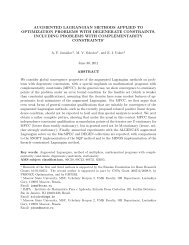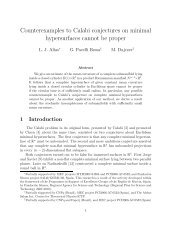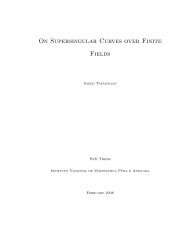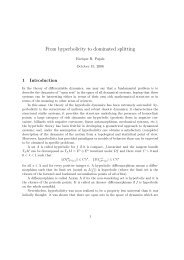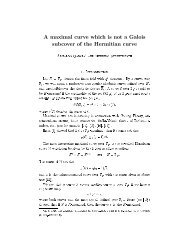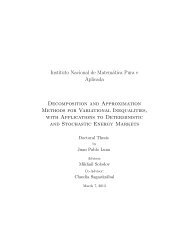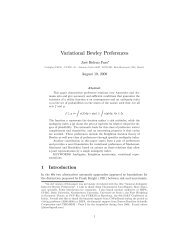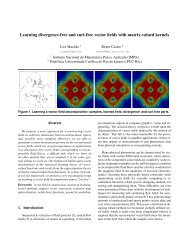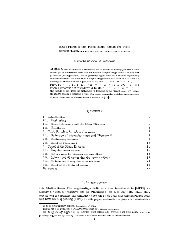Notes on Boussinesq Equation
Notes on Boussinesq Equation
Notes on Boussinesq Equation
You also want an ePaper? Increase the reach of your titles
YUMPU automatically turns print PDFs into web optimized ePapers that Google loves.
24 2. LINEAR PROBLEM<br />
Corollary 2.17. Under the assumpti<strong>on</strong>s <strong>on</strong> f and g in Propositi<strong>on</strong> 2.16. The soluti<strong>on</strong><br />
u of the linear problem (2.1) satisfies<br />
where p = 2<br />
1−γ , q = 4 γ<br />
‖u‖ L q (R :L p 1 (R)) ≤ c(‖f 1 ‖ 1+ γ 4 ,2 + ‖h‖ γ<br />
4 ,2 ),<br />
and γ ∈ [0, 1].<br />
Proof. The result follows as a c<strong>on</strong>sequence of (i) and (ii) in Propositi<strong>on</strong> 2.16.<br />
From (2.27), (2.28) and Corollary 2.17 we can c<strong>on</strong>clude that a soluti<strong>on</strong> u of the linear<br />
problem (2.1) satisfies<br />
u ∈ L ∞ (R : H 1 (R)) ∩ L q (R : L p 1 (R)),<br />
where p, q and the initial data satisfy the c<strong>on</strong>diti<strong>on</strong>s in those results.<br />
□



